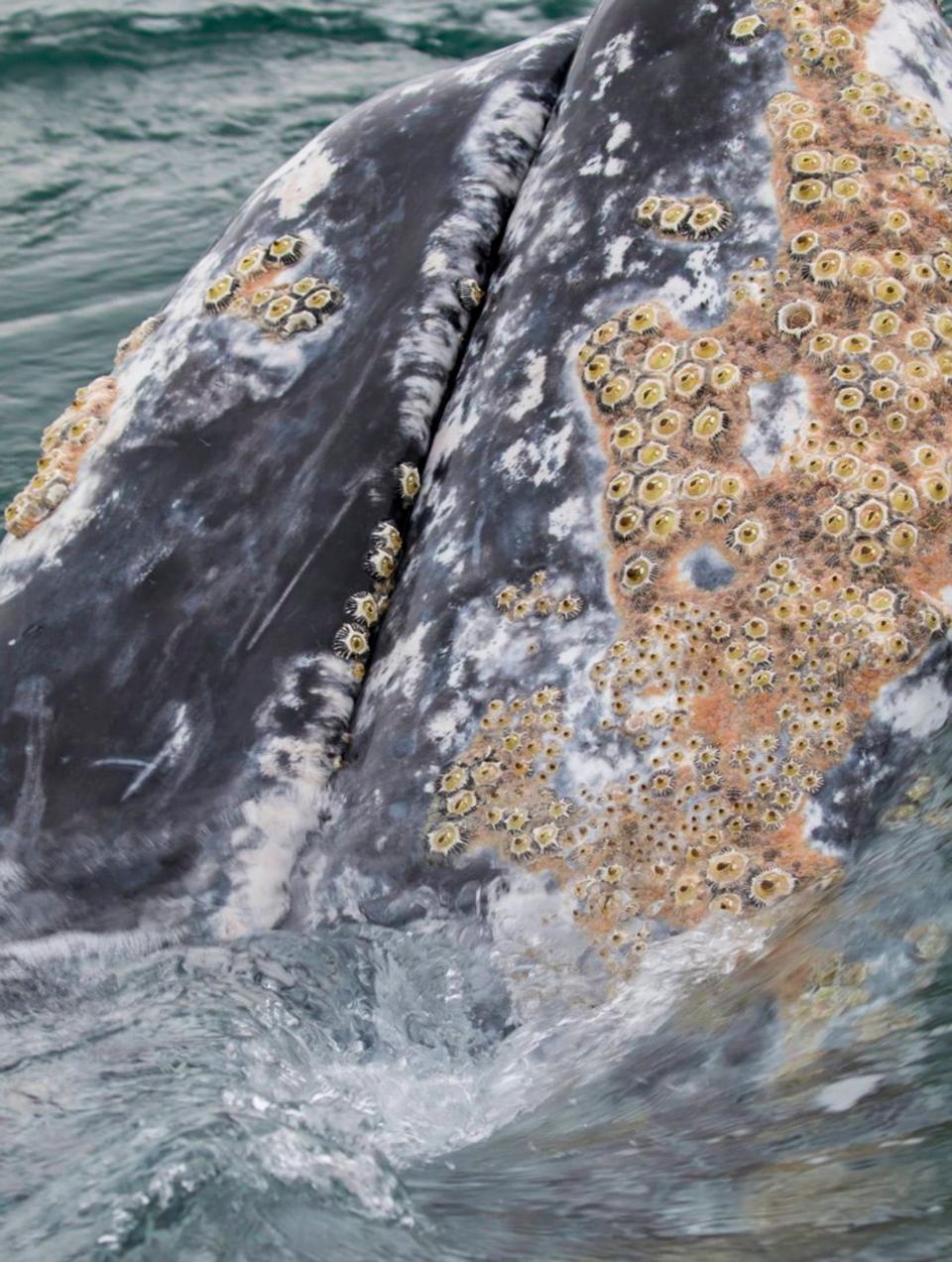Gray whale spotted off Florida coast. Here's why the sighting is so unusual
A birthday fishing trip turned into a trip of a lifetime, with a fish story that will be hard to beat in years to come after a father and son spotted a gray whale off Florida's coast.
Abie Raymond, captain and owner of Go Hard Fishing, told USA TODAY he took his father out on his boat from Haulover Inlet, just north of Miami, earlier this week, when they spotted a blast from the blowhole of a whale, which Raymond estimated was 40 feet long.
He said officials later confirmed it was a gray whale.
It was the perfect birthday surprise for the lifelong area resident, Raymond said.
"He was like, definitely definitely mesmerized by the magic of it — just seeing a whale right out front, because he was born and raised here like I was," Raymond said. "He's never seen anything even like that or heard of anything like that in Miami."
Whale of an experience
Raymond said the ocean current clashing with the wind made for drastic swells. He thought big creatures like a whale shark might surface for a joyride on the waves.
"Then lo and behold, there comes this big blow out offshore of us. I was like, 'Dad! There's a huge whale out there! Like a real whale!"
He said they caught up to it going around 10 knots, and it started swimming around and under the boat.
"Me and my dad will never forget the beautiful site in the cobalt blue Gulfstream water on a vivid wintery Miami Beach morning," Raymond wrote in a post on Instagram on Tuesday.
Where was the gray whale spotted off Florida?
The fishermen spotted the whale off Sunny Isles Beach, located between Miami and Hollywood in South Florida.
This is far from where gray whales are typically found.
Quick facts about gray whales
According to NOAA Fisheries, gray whales:
Weight: About 90,000 pounds
Length: 42 to 49 feet
Lifespan: Unknown
Threats: Climate change; disturbance from whale-watching activities; entanglement in fishing gear; habitat impacts; ocean noise; vessel strikes.
Region:
The eastern North Pacific group are found along the west coast of North America
The western North Pacific group are primarily found along the coast of eastern Asia
Why was the gray whale off Florida unusual?
"Once common throughout the Northern Hemisphere, gray whales are now only regularly found in the North Pacific Ocean where there are two extant populations, one in the eastern and one in the western North Pacific," according to NOAA Fisheries.
"FWC whale biologist and NOAA team at Virginia key have determined and confirmed this is a Grey Whale. It likely swam all the way through the Northwest Passage from the Pacific Ocean," Raymond posted on Instagram.
The gray whale disappeared from the eastern Atlantic in the 15th century and from the western Atlantic around the 17th to 18th century, according to Youri van den Hurk, who is part of the Demise of the Atlantic Gray whale project.
It's not the first time a gray whale has been spotted far from its normal range in the Pacific.
In 2021, a 26-foot-long gray whale was spotted in the Mediterranean.
Gray whales known to be curious about boats
"Gray whales are known for their curiosity toward boats in some locations and are the focus of whale watching and ecotourism along the west coast of North America," NOAA said.
Gray whales make extremely long migrations
Gray whales travel about 10,000 miles round-trip and in some cases upwards of 14,000 miles during migrations, one of the longest annual migrations of any mammal, according to NOAA.
Are gray whales endangered?
All gray whale stocks are protected under the Marine Mammal Protection Act.
The eastern Pacific population was once listed as endangered under the Endangered Species Act but was removed from the list in 1994, according to NOAA Fisheries.
The western Pacific group is estimated to consist of less than 300 whales and is listed as endangered under the Marine Mammal Protection Act.
How can you identify a gray whale?

Gray whales have a hump and a ridge of sharp bumps along their backs instead of a dorsal fin, according to World Wildlife Fund.
Gray whales are more marbled than plain gray, with a relatively small, narrow head that has a distinctive arch between the blowhole and snout, according to the Whale and Dolphin Conservation USA.
"Gray whales usually also have huge amounts of barnacles and whale lice attached predominantly to the head and body."
They stay close to shore and feed in shallow water, filtering food from water as they swim along the sea floor on their sides.
Right whales more typically seen in Florida waters

The coastal waters off Florida and Georgia are the only known calving area for North Atlantic right whales and these waters have been designated as right whale critical habitat by NOAA Fisheries, according to the Florida Fish and Wildlife Conservation Commission.
Right whales are typically sighted off Florida between November and April. They spend much of their time just below the surface and can top 50 feet long and 100,000 pounds.
If you see a right whale, FWC asks that you report the sighting immediately by calling one of the following numbers.
U.S. Coast Guard on marine VHF Ch. 16
877-WHALE-HELP (942-5343)
888-97-WHALE (94253)
This article originally appeared on Treasure Coast Newspapers: Florida gray whale spotted, caught on video, near Miami

